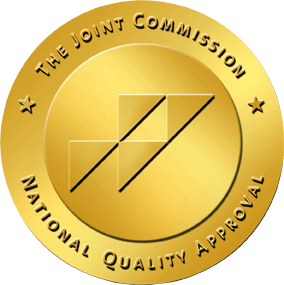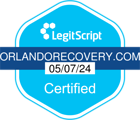While hydrocodone is prescribed relatively frequently for pain, the medication has risks. In the United States, the Drug Enforcement Administration (DEA) classifies drugs based on their medical uses and addiction potential. Hydrocodone, like many other prescription opioids, is a Schedule II drug. This means it has a high risk for abuse, addiction and physical dependence.
What Is Hydrocodone?
Hydrocodone is a prescription drug used to treat moderate-to-severe pain. Hydrocodone can be prescribed either on its own or as an ingredient in other medications.
For example, hydrocodone is paired with acetaminophen in the brand-name drugs Lortab, Norco and Vicodin. Hydrocodone is classified as an opioid. Opioids are a class of drugs that can change how the brain responds to pain. They also change how pain signals are sent and how the body feels pain.
Hydrocodone Brand Names
Several prescription drugs contain hydrocodone as an active ingredient. Examples of products with hydrocodone include:
Treatment Can Be Life Changing
Whether you are struggling with addiction, mental health or both, our expert team is here to guide you every step of the way. Don’t wait— reach out today to take the first step toward taking control of your life.
- Acetaminophen and hydrocodone (generic)
- Anexsia
- Dicodid
- Hycodan
- Hydrocodone (generic)
- Hycomine
- Hysingla ER
- Lorcet-HD
- Lortab
- Norco
- Tussionex
- Vicodin ES
- Vicoprofen
Hydrocodone Street Names
Hydrocodone has the following street names:
- Fluff
- Hydros
- Vic
- V-itamin
- Vike
- Watson-387
Hydrocodone Addiction
Hydrocodone, like other prescription opioids, can be abused and lead to addiction. While we don’t have exact numbers for hydrocodone abuse, we do know that up to one in four people misuse their prescription opioids. Considering over 8.5 million Americans get hydrocodone prescriptions yearly, it suggests that over two million of them might misuse it, leading to addiction.
Is Hydrocodone Addictive?
Yes, hydrocodone can be highly addictive. It activates opioid receptors in the brain and the central nervous system (CNS), leading to the release of pleasure-inducing chemicals that replace pain with feelings of happiness. Some users may feel relaxed or euphoric when taking hydrocodone.
Regular opioid use can create a reward cycle. The body starts relying on the drug to numb pain. The brain then associates the drug with positive emotions. This connection between hydrocodone and pleasure can lead to addiction. People addicted to hydrocodone may keep using it despite negative consequences. If someone stops using the drug, they can experience withdrawal symptoms due to physical dependence.
If someone is prescribed hydrocodone, they can take steps to reduce the risk of addiction. It’s crucial to use hydrocodone exactly as prescribed and directed by a doctor. The dosage should never go beyond what the doctor recommended. However, even when someone follows their doctor’s instructions and takes hydrocodone as prescribed, addiction can still happen.
How Long Does It Take to Develop a Hydrocodone Addiction?
The time it takes for someone to develop a hydrocodone addiction can vary from person to person. Addiction is a complex issue where a person keeps taking a substance even when it harms them. For some, addiction may happen shortly after they start taking hydrocodone; for others, it may take much longer, or they might not become addicted at all.
Hydrocodone Abuse Statistics
Specific statistics on hydrocodone abuse are not available. However, opioid abuse is a concerning issue in Florida and across the United States. Between May 2022 and April 2023, Florida witnessed over 5,500 opioid overdoses. This number includes nearly 900 overdoses related to natural and semi-synthetic opioids like hydrocodone.
Hydrocodone overdose statistics are available, however. The first half of 2022 saw hydrocodone involved in 230 fatal overdoses in Florida. Of these, hydrocodone directly caused 59 overdoses. These statistics account for about 3.9% of all opioid-related overdoses in the state during that period.
While hydrocodone overdose rates are concerning, Florida has taken steps to address the issue. For instance, the state has implemented a prescription drug monitoring program called E-FORCSE. This program monitors for suspicious activities among doctors or pharmacies. The goal is to identify potential overprescribing or filling large numbers of these prescriptions.
For more information about hydrocodone abuse and addiction or treatment options available in Orlando, contact the Orlando Recovery Center Drug and Alcohol Rehab.
Signs and Symptoms of Hydrocodone Addiction
When someone develops a hydrocodone addiction, signs and symptoms of abuse and addiction often begin to emerge. These symptoms can take several forms and can be behavioral, psychological or physical. If you or a loved one take hydrocodone, it is important to be aware of these different types of symptoms.
Behavioral Symptoms
A person’s behavior may change as a person abuses hydrocodone. Possible behavioral changes include:
- Keeping secrets to hide hydrocodone use
- Changing activities to accommodate hydrocodone use
- Lying and making excuses for hydrocodone use
- Low energy linked to hydrocodone
- Unkempt appearance
- Stealing to support hydrocodone use
Physical Symptoms
The physical side effects of hydrocodone abuse reflect the fact that opioids are central nervous system depressants. For example, physical side effects of hydrocodone abuse can include:
- Drowsiness
- Sedation
- Slowed breathing and heart rate
- Lack of coordination
People may also experience:
- Itchiness
- Nausea
- Vomiting
- Constipation
- Headaches
- Dizziness
If someone abuses large doses of hydrocodone, they may have slurred speech and appear agitated.
Psychological Symptoms
Opioid abuse can affect mental health as much as physical health. Some psychological symptoms of addiction include:
- Changes in mood or behavior
- Trouble making decisions
- Abandoning their responsibilities or other interests
- Changes in sleep patterns
- Rapid mood changes
- Decreased motivation
- Mental health disorders like anxiety
Effects of Hydrocodone Addiction and Abuse
There are specific side effects of hydrocodone abuse that can include serious long-term consequences. Even when someone takes hydrocodone as prescribed, side effects are possible. The higher the dose someone uses, the more apparent and intense the side effects are likely to be.
Long-Term Effects of Hydrocodone Addiction
Hydrocodone and other opioids can cause severe damage to the gastrointestinal system. Because hydrocodone slows down the GI tract, it causes chronic constipation. Chronic constipation increases the likelihood of complications like bleeding and rectal prolapse.
Other symptoms can include:
- Heavy snoring, reduced airflow or stopped breathing during sleep (sleep-disordered breathing)
- Increased heart health risk
- Falls and fractures
- Hormonal imbalance
- Sexual dysfunction
- Reduced immune function (immunosuppression)
Hydrocodone Overdose
Excessive hydrocodone use can be very dangerous. It can slow down your breathing and nervous system so much that it becomes life-threatening. This can cause your breathing and heart rate to decrease significantly, potentially leading to brain damage, coma or even death.
Some of the key signs of a hydrocodone overdose include:
- Pinpoint pupils
- Extreme drowsiness
- Nodding off
- Sweating
- Clammy skin
- Nausea and vomiting
- Loss of consciousness
- Slow, shallow or stopped breathing
When someone combines hydrocodone with another opioid or another central nervous system depressant, the risks of an overdose are significantly higher. For example, combining hydrocodone with alcohol or a benzodiazepine like Xanax can make an overdose more likely to occur.
Mixing Hydrocodone and Alcohol
Many medications carry an increased risk of side effects and overdose if mixed with alcohol. Hydrocodone and other opioids should never be mixed with alcohol. Doing so can increase the risk of serious side effects like overdose and death.
Both substances work similarly to slow down the central nervous system. They can slow down movement, thinking, breathing and other bodily functions.
Other side effects of mixing hydrocodone and alcohol can include:
- Drowsiness
- Dizziness
- Memory problems
- Unusual behavior
- Impaired motor control
- Slowed breathing
- Increased risk for overdose
Hydrocodone Addiction Withdrawal and Detox
Withdrawal is a condition where a person experiences discomfort when they try to stop taking a drug. However, for someone to experience hydrocodone withdrawal, they first need to be dependent on hydrocodone.
Physical dependence can occur even if a person takes hydrocodone exactly as prescribed by their doctor. Dependence happens when hydrocodone “rewires” the nerve cells to become used to its presence. When taking hydrocodone in high enough doses for a long enough time, the body decreases the number of opioid receptors being activated.
When hydrocodone is stopped, there are not enough opioid receptors to maintain normal bodily function. This leads to hydrocodone withdrawal symptoms. Relapse is extremely common during this time because of how uncomfortable the symptoms can be.
Hydrocodone Withdrawal Symptoms
Withdrawal symptoms for hydrocodone begin about 8–24 hours after the last use. They can last up to 4–10 days while the body is readjusting to not having the drug. Symptoms may include:
- Anxiety
- Cold flashes
- Hot flashes
- Insomnia
- Sweating
- Tearing and watery discharge
- Nausea and vomiting
- Diarrhea
How Long Does Hydrocodone Stay in Your System?
Drugs stay in the system for about five half-lives before being cleared from the body. Since different formulations of hydrocodone have different half-lives, how long it will stay in the body varies.
Immediate-release hydrocodone has a half-life of about four hours, so it will clear in about 20 hours. Extended-release hydrocodone has a half-life of 7–9 hours, so it will stay in the body for roughly 35–45 hours.
Hydrocodone can be detected in the blood for as long as it’s in the body, so anywhere from one to two days, depending on the formulation. The most common type of drug test is a urine test, where hydrocodone is detectable for one to three days.
Hydrocodone Detox
Detox is a challenging but expected part of the addiction treatment process. Before any addiction treatment can start, a person must undergo detox. Detox is the period where the drug is leaving the body. Withdrawal symptoms are common at this time, and the risk of relapse is very high.
Many people go through detox at home, but this is risky. It is recommended to enter a treatment program to give a person the highest chance for success. Detox programs have trained medical professionals who can prescribe different treatments to manage symptoms and ease the withdrawal process.
Hydrocodone Addiction Treatment
A person dealing with hydrocodone addiction might start with intensive inpatient treatment. As they make progress, they can move to less intense outpatient care.
Inpatient Hydrocodone Rehab
After detox, the rest of treatment begins. Inpatient rehab is residential, meaning participants live at the facility until they are ready for the next stage of treatment. Patients’ daily schedules are structured and may include group and individual therapy sessions, among other appointments. Once hydrocodone addiction rehab is completed, outpatient rehab may be recommended to continue treatment.
Outpatient Treatment
Outpatient hydrocodone rehab is less structured and doesn’t require participants to live in a treatment facility. Outpatient hydrocodone rehab often includes group therapy sessions, although individual counseling and medication management can be included as well.
Outpatient rehab may be ideal for someone with a mild hydrocodone use disorder who has a supportive home environment and doesn’t require constant supervision.
Overall, rehab should last for at least 90 days to provide the best chance of full recovery and minimize relapse risk.
Hydrocodone Addiction Treatment Medications
Medication-assisted treatment (MAT) drugs may be administered in detox or rehab as medically appropriate to help a person overcome their hydrocodone use disorder. The two gold-standard MAT medications are methadone and buprenorphine.
These drugs are both long-acting opioids that reduce opioid cravings. If a person uses an opioid like heroin while on methadone or buprenorphine, they won’t experience the desired high. This is because the effect is blunted by MAT.
If methadone or buprenorphine cannot be used, other non-opioid medications like clonidine, lofexidine and naltrexone can treat withdrawal symptoms.
Hydrocodone Rehab Centers in Orlando
Beginning treatment for hydrocodone use disorder can be overwhelming, but there are many options available to those in need. There are some individual factors to consider when comparing hydrocodone addiction treatment centers in Orlando:
- What is the extent of the addiction?
- Have you tried other treatment options and relapsed?
- Are co-occurring mental health disorders present?
- Do you take other substances besides hydrocodone?
Finding the right facility is an important part of improving treatment outcomes.
Get Help for Hydrocodone Addiction and Abuse in Orlando Today
If you or a loved one struggles with hydrocodone, help is available. Orlando Recovery Center Drug and Alcohol Rehab offers evidence-based hydrocodone detox and rehab options. You can verify your insurance benefits online and even sign up for same-day admission for hydrocodone addiction treatment.
Ready to take the first step toward hydrocodone addiction treatment and rehab? Contact Orlando Recovery Center Drug and Alcohol Rehab today to speak with our skilled, compassionate Recovery Advocates.










